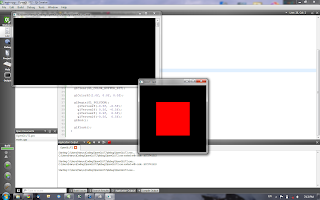她的新浪博客:http://blog.sina.com.cn/loveandpeacejoy
今天写点儿正事。说说该如何修炼咱们的耳朵。此文只针对能力的提高,不针对应试!往往能力提高了,应试就不会有问题!
先说一个基础问题:有一个真理是不变的,那就是,语言,是一种能力。听、说、读、写,四种能力任何一个,没有连续的三个月以上的辛苦付出,是不会有显著提高的。不管怎样的方法,怎样的秘诀,如果你不坚持,是不可能有任何提高的,所以这个得先明确了。
其次再来说技术性问题:该如何练听力。不同人适合不同的办法,没有一套方案是可以做到放诸四海皆准的。所以我只能分享我自己的练习耳朵的过程,然后提些建议。
1. "到底应该怎么练听力啊?"
我正式开始重视起听力,是从大一开始的。郑老师给我们推荐Step by Step四册书听,于是我就和张希开始每天听这套书。一共四册,我每个学期听一册,用两年听完了这四册书,上面的题都认真做了。最一开始一定是什么都听不懂的,因为高中之前,我基本没怎么练习过听力,准确地说,那时候不知道原来耳朵是需要练习的。。我没有别的办法,听不懂就重新听,用复读机一遍一遍地听,四册书我觉得我听了不下二十遍,听坏了两台复读机,N个耳机,耳朵插耳机插的出水疱,后来换成戴在头上的大耳机就稍微好了些。这套教材很好,因为难度是一点点提升的,所以比较推荐。
除了Step by Step以外,同时进行的听力练习就是听广播。专四有新闻听力,所以我和张希就去店里买收音机,因为是痛下决心要练好听力的,所以我们都狠下心买最好的收音机,接收效果强的那种。于是,我们就买了全店里最大的收音机,比一般的正常收音机都大两倍,我俩买的一模一样的,只是她是黑色的我是灰色的。于是学校里就多了一道亮丽的风景线,总有两个人拿着砖头大的收音机在学校的清晨走来走去,嘴里还一直念念叨叨。
起初刚开始听的时候,听的是VOA,因为传说BBC很快,所以我没敢碰它,只碰了VOA。第一天听的时候我给崩溃掉了,只能听懂"This is VOA。。。"。但是没有办法,只能一天覆一天的听,不能断开。于是我就每天像一个石头一样,早晨六点半到八点整,雷打不动,起床听VOA。正好步行去学校。到后来的时候,八点开始上课了,我还偷偷把天线伸出去继续转台听BBC。大家别觉得听不懂很可怕,咱们是中国人,北方人第一次听广东话也听不懂,但是你多听,硬着头皮听,不就也慢慢能听懂了吗?比如小怡子,她一开始也不懂上海话啊,那么复杂,谁能听懂?但是在上海活了四年,现在小怡子不但能听懂上海话说话,还能听懂上海话骂人,还会说上海话,就是这个道理!所以你别问,你就听。听不懂咋办?听不懂继续听啊!说那么多废话干啥!你就听就行了!只要你别放弃,你早晚有一天能听懂!就比如我,大一一年基本没咋听懂,但是就傻傻地听,在大二的一天早晨,我正在刷牙,广播里好像正在播布什的一个演讲,我突然发现我一字不落的都能听懂了,我一兴奋,就把刷牙水喝了。
后来越听VOA越觉得速度慢,于是转战BBC。第一次听BBC,以为是在辩论会,后来发现,是正常语速,我就给崩溃了。崩溃完以后,继续听,终于发现,要想练耳朵,BBC才是王道。我觉得跟读是一个比较不错的方法,他说一句,你就在三秒钟以后重复他的话,你只要能重复下来,你必定是听懂了才去重复的吧。我就那么一直跟读了好几个月。英音和美音都听习惯了,才是真正听力好。光吃美音,不吃英音,那不行。毕竟现在国际正式场合,新闻发布会的同传之类,都说的是英音。
我就这样听力教材加VOA和BBC,坚持了四年没断,当然肯定有过年之类早晨没起来的可能。但如果一般早晨没起来,那么当天的听力我一定会在下午五点补回来。听力,是需要每天都坚持的,一天都不能断,不能断,把它当成吃饭和喝水。耳朵这个东西,你不用了,一定会生疏的。
如果听广播因为条件等没法做到的人,可以上网听,我博客左边有VOA,BBC,CNN,CSPAN等听力网站的链接,进去以后都有在线可以听的。再说一下,我的这个办法,不可能保证都能提高听力,到底可行不可行,完全看你自己的坚持程度。坚持的时间越久,你的听力会越好。
2. "我真的认真听了,但是我为啥就听不懂呢?"
、
这是一般人们爱问的第二个问题。我觉得如果听不懂的话,有两个可能。第一,你练习的不够久。比如小怡子,她如果只在上海待了一年,是不可能听懂上海话的,只有她待了四年,她才能真正听懂。明白?第二,很可能是你发音不准。听力能听懂东西,是一个语音识别的问题。比如你一直把"尴尬"念成"监介",那么别人说"尴尬"的时候,你一定听不出来那是"尴尬"。所以,如果你真的很下辛苦练听力了,坚持了至少三个月以上,你还是一点起色都没有,就也许是你的语音识别有问题,当然不可能像尴尬监介那么严重的语音识别有误,但只要发音不准确,就绝对可能导致你听差。这样的情况下,就好好补习一下音标一类的知识,让自己首先能把音念准了,然后再听。这样也许会有帮助。
3. "我听听力的时候总走神,到底怎么回事啊?"
有人听听力总是听着听着就差了,听着听着就走神了,听着听着就睡着了。如果是这样,就说明你不能长时间集中精力做事,这样的话,你要是总走神,就算坚持了三个月,其实也相当于只听了3天的功力,没啥大用。你要是坚持不了,你可以试一下跟读,哪怕隔句跟读,也能保证帮助你集中注意力。因为你要是要做到跟读,就必须使劲听,并努力记忆他的话,这样就可以集中精力了。还有,强烈建议早晨听听力,可以很清爽,不要再睡过去了。
4. "给推荐点儿练习听力的教材哇!"
这个问题我没什么发言权,因为我用过的书版的教材很少,只有Step by Step和中级听力、高级听力。我练听力主要就是听广播了。
5. "咋能通过看电影来练习听力呢?我发现我每次电影看了,但是听力没练"
我自己是在听力练到一定程度以后,才开始做电影的。我最一开始的听力,并不是通过看电影提高的。我最一开始看电影,也是看中央六台那种的,中文配音,中文字幕,跟英文不沾边。后来才开始买碟看(那个年代还没开始流行从网上下载看)。买碟租碟的时候就遇到了问题,说的是英文,我觉得我好像似乎能听懂他们说什么,但是底下的字幕翻译却和我听到的不一样,我就郁闷啦,觉得他们翻译的好烂,自己很愤怒,因为很搞笑的东西我都笑翻了,但是我妈看了底下的字幕都笑不出来。后来就加入了字幕组,一开始没敢尝试听译,因为我对我自己的听力那时候还没自信到那种程度。听电影和听新闻绝对不是一回事,就算你BBC和VOA都听得百分之百了,电影绝对有听不出来的东西,一是因为角色发音各种奇怪,各种口音,二是因为新闻里是正式用语,而电影里是俚语偏多,语速快的时候能吓死人。
你要是选择用电影练习听力,建议最好有听力基础,至少VOA的水平应该能听懂百分之七十。可以选择一部你最喜欢的百看不厌的电影,反复看好几遍,遇到听不懂的地方,拖回来重新听,听了五遍以上若是还没听懂,就不要听了,直接挂字幕看看人家说的是啥,看到subtitle以后再分析一下你为啥没听懂,如果单词明明都认识,但你就是没听懂,那八成就是因为吞音连音等问题。这些问题很好解决,你自己学会这样的读法,下次就能听懂了,还是一个语音识别的问题。
如果你决定用电影来提高听力,那你一定要记住你看这个电影的目的不是for fun,是要练听力,所以别看着看着太高兴,到后来直接挂着字幕一路看过去,那样就没有效果啦。谁最一开始都不习惯看裸片(即无字幕),你得坚持住,哪怕半懂不懂半猜半懂得也得看完,多看几遍,多听几遍,就明白了。然后再外挂字幕看。
6. "为啥电影里总有听不懂的东西"
这个问题我专门问过阿比大叔,就是我最最崇拜的听译牛人,他的答案就是缺乏对画面的分析,在短短两分钟左右的预告片里,很有可能突然插出来一句莫名其妙的台词,这个时候如果能仔细分析背景画面,就能分析出来很多剧情。这点我做的很不好,因为每个预告片里,总有那么一句两句我听不懂,郁闷的要死。还是缺乏练习,得多练多练,啥时候电影能看到阿比大叔那个水平,我就开心了。所以我还要努力!!!
再强调一遍,语言能力的提高,没有任何捷径而言。(有捷径,书山有路勤为径)听说读写四项能力,都是硬功夫,你什么时候不狠下心死练,是不会有实质性提高的。我想起了XDF一个老师说的经典的话,能力提高的最大捷径就是努力,但是努力最痛苦,所以很少人能走成捷径。So,如何提高,其实人们自己心里都清楚,但还是会期望度很高的去问别人该如何做,当得到一个答案的时候,自己又失望,怪人家没有把"真经"传授给你。但其实,世上根本没有什么真经,没有秘诀,唯一有的,只有一日一日的切实付出。如果你能疑虑的少一些,付出的多一些,你的听力早就上去了。(说得多好啊,还说自己语文不好,让本人汗颜了!)
所以,赶快抓起任何一个材料,只要是native speaker说的东西,开始练吧。时间很宝贵。Hard work counts,其他都是扯淡。
单词篇:
Ragbear Survivor听译组组长
我们为什么要默写六级单词?(一种由我发明的英语学习方法的理论化叙述)
WHY
我们为什么要默写六级单词?
◆CET-6在非英语专业的求职过程中起着Vital般的作用。甚至可以说六级这个分数是会伴随你一生的。
◆CET-6这些单词并非是中国CET考试院从某本Dictionary里面挑出来的,而是由美国历史上最著名的词汇家Webster根据生活实际经验以及通过统计学意义上的计算而筛选出来的。
◆因此六级单词非常具有现实意义:(1)六级单词属于报刊文章中出现频率最高的Basic Vocabulary。(2)六级单词几乎涵盖了所有生活中要常用的、比较fancy的meaning.
◆六级单词在考试过程中的重要性比其他考试体现地要明显很多。
◆在听说读写译的五项技能中,先不论最高层次的译。只有说和写才能真正地做到:make a direct profit! 因为只有这两者是output.(只进无出,那叫闷骚!)而写的过程中,拼写这个问题困绕了太多人。英语单词拼错,就像中文写白字那样,是一种写作者自身修养还未到家的体现!
◆何谓我认识这个单词(e.g: exaggerate)?
第一,是音。我听到别人读exaggerate,我明白这是夸张的意思。这就引出了
第二点,意。
第三点,是形。也就是说我看到这个词,我知道她表达的意思是夸张这个concept。。
好,现在我们来过一遍是怎么默写exaggerate这个单词的?首先你听到了发音,如果你熟悉"音",就知道是在说夸张的concept。OK接着开始默,根据发音e-xa-gge-rate。事实上如果你对这个词形不熟悉的话。你根本无法确认自己根据发音而作的拼写是否正确。因此,如果你能准确默出一个单词。95%的情况下说明你对这个word的音形意都掌握了。(5%的情况是:不知道词的意思,恰好根据发音猜对了拼写)
◆因此默写的整个思维过程就是一种将音形意完全融合在一起,相互碰撞,相互促进的BrainStorm(直译)。
◆如果能在读完单词的下一秒中就默出一个单词,95%的情况说明你已经完全掌握这个单词的音形意了。反过来说,如果音形意任何一项的掌握不牢都会导致单词的默写错误。
◆语言学上有所谓的"记单词的最佳路径":先记发音,再通过发音识记词形,最后才是把音形与意通过记忆、实际运用等方式牢牢掌握住。[其实整套学习思维方法Follow的就是这条Best Route]
HOW
我们怎样默写六级单词?
◆我不认识俞敏洪,也和NEWOriental无任何利益瓜葛。但好书就是好书:《六级词汇 词根+联想 记忆法》 [这个软文写的厉害的,不过组长应该是真心推荐的]
◆这本书最好的几个优点叙述如下
(1)分为30个lists。滴水穿石,每天7到8分钟。累计起来不得了。实际上"任务分解法"应该算是一种很好的英语学习方法。
(2)联想法(胡思乱想),词根法,漫画法…俞敏洪同志发扬了无论用什么猫狗方法,只要能背出单词的就是好方法的伟人思路写下了这本书。将各类单词记忆法发挥到了极致!
(3)有mp3光盘。这是默写的基本条件。这其实也预示了另一个真理:词汇书必须有发音光盘。(其实我觉得新东方其实可以做得更好:把例句也读出来,那就更棒了。[伟大的Time1000就是这样的])
◆推荐默3遍。(半年时间内搞定)
每天默1到2个unit。我第一遍默的时候是这样的:第一天晚上先看两个unit。然后勾出自己不稳作的词。第二天早上默。默好后对,错了抄在书上。并再听一遍,跟读,有例句的读例句。第二天晚上再看后面2个unit……
虽然我觉得自己从小就比较注重拼写,但默第一遍时还是会错得比较多,此时一定要挺住。现在错绝对是好事,不错哪能进步。
语言学家说:当接触一个单词7遍后,你将能永远记住这个单词。由于每次默写后还要读一遍,再加上第一遍默的时候还在前一晚看过一遍:加起来正好7遍。
◆Note:当一个单词意思比较多时,不要黑心,每次就记一个意思就成。
口语篇: 我是怎么看friends练口语的
很早就开始看F6,最开始是从起床开始,就一个人对着电脑,傻笑一天,每天吃一顿饭,傍晚和同学一起吃饭的时候,基本就不会说中国话了,被人说什么第一个反应就是英文。周末同学都回家了,更是变本加厉,因为没有人和我说话,内心独白都是F6里的各种声音,还有那种“哄笑”配乐,一个周下来,感觉人快疯了。
大学的时候是为了好玩,没想着真的用它来学英语。
后来工作了几年,因为一直野心勃勃的要去美国公干,所以从那个时候开始重新FAN F6,很长一段时间过去,学下来,感觉有些许体会了,上来冒个泡。
第一遍,带中文字幕看一遍
10季真不是个小数字,看了一遍把当初那种感觉找了回来,所谓的感觉,就是在内心独白的时候都是英语,说话的第一个反应也是英文。
第二遍,带英文字母看了一遍
我买的是60张的那种DVD,英文字母有几季还是不错的,后面的越做越差,真是没法看,就当了剧本。第二次看,基本都能听懂了,就帮着DVD校对字幕,校对的过程中,听力本身就是一个提升。
第三遍,不说你也知道了,去掉字幕,
去掉字母有一个好处,就像丢了拐棍,你听起来就不会像看着英文字母那样一下就反映到脑子里,还要想一下,哦,这个单词是什么来着,因为我们很多时候对于掌握了的单词,突然冒出来,还是会思维停滞一下,就在这停滞的一下,新的内容又冲进来了,你就顾此失彼,到最后,前面的没想起来,后面的又忘了听,刚开始的时候是懊丧不已,因为前两遍的信心全被他给摧毁了,不过没关系,很正常的么,这个地方,你就要不停的重复听,所以你买DVD机比较好,有那个A-B重复健,可以无限重复你要听的句子,你总有想起来的那一刻吧
第三遍是最痛苦的,也是最能升华的一个阶段。
我在做第三遍的时候,是听力口语一起来的,其实这两个本来就是分不开的,
口语,要求自己强力模仿!!!!!注意这个词哦~~~不是吃干饭的,充分利用了A-B健,一个句子重复放,跟着读,然后跟着说,最后脱口而出,一点也不比他们差,甚至可以在语气,语调上,和他们一模一样。作这一部分的时候,我犯了一个错误,就是跟着读剧本,这是十分错误的,正确的做法是,像学鸟叫一样,学他们的声音,不要把自己原来读英文的习惯带到里面去,剧本只是告诉你他们再说什么内容,只是一个提示的作用,因为他们有很多连度,四个音节,在他们嘴里常常变成了2个音节,甚至一个音就带过了,你根本就反应不过来,这也就是我们听不懂他们说话的原因,太快了,而你根本不知道他连读了,如果按照自己的读英文的习惯,永远也做不到他们一样快。所以记住,!!!!!!学他们发出的声音,而不是读他们说出的句子!!!!!!!
这第三遍,我可以用老牛拉破车来形容,实在是很慢很无聊,要花费大量的时间,特别是一开始,记得101背到我想吐,莫尼卡的那句 “THERE IS NOTHING TOTELL@!#$%@#%@!%@$#%”可以直接当减肥药了,一听到就想吐!!但是,有一点保证,以后老外用多快的速度,我都能听懂她在说“THERE IS NOTHING TOTELL@!#$%@#%@!%@$#%”而且可以和她说的一样快,一样纯正的美国纽约音。兄弟们~~~代价惨重阿~~~~~`你可以算一下,一集大约20分钟,每句话重复10遍,那是什么概念,就是一集学下来要200分钟,折合3个多小时,如果你特别笨的话,多跟几遍,时间又上去了,我经常会思想溜号,A-B的时候不知道想什么去了,就要多重复几遍。我当初算了一下,我大约要跟到第7遍的时候才有感觉,前面不是语速慢了,就是快了,要么就是停顿不对,也可能我比较笨?加上笨的原因,加上溜号,大约有4个小时一集把.
下面分析一下他们六个人的口音语速,RACH,我最喜欢的角色,她的口音不很好学,因为她经常会发出很可爱的声音,感情丰富啊,而且连音也比较多,但是学她很有用,因为她的发音很性感,个人认为。CHANDLER这个家伙经常会把我逼疯的,他太贫了,语速又快,最难学了,,最好学的是PHEEBS,很喜欢她,她的发音很圆润,语速也很正常,MONIKA 可以用她来练长句子,她经常会一口气说很多,JOEY,他反映慢,语速适中应该是最好学的一个,可是他的声音太低了,不适合女生学,我学他太吃力了,男生的话是个首选~~~~
这样我整了3季的时候,除了生词,在新天地泡吧的时候,可以和老外自由对话,心理满足了一把
过了3季,后面的7季就会块很多,因为很多句子,在你的耳朵里已经是很简单的,根本不需要重复,你要练习的只是特别难的那些长句,记不记得伦敦之行?走之前,莫尼卡的那一口气说完的长句子,呵呵,那就是最高境界,你可以脱口而出,和她一样快,一样不喘气,后面的你就不用跟了,你可以出师了~~~
但是,这是3季以后的事了,3季不过,一切免谈~~~
而且有一项工作是必须作的,是贯穿10季的工作,那就是笔记!!!
除非你的牛人,不过牛人也就不来看我这个帖子了,呵呵
笔记很重要,里面会有生词,特别是“该死的ROSS”,他在里面经常不出好词,你就查吧,
再就是俚语,很多俚语这才是地道的美语,你只有作了笔记你才有积累,最重要的是多有成就干啊,看到那么多的笔记,我的笔记可以从地板摞到写字台那么高,因为我字特别大?不是!是我做得很细!细到从头看IS的用法,把它当作一个事业来做,当作一个重整英语的契机,好好的梳理一下自己的存货。
说实话,这也很痛苦的~~~~~看肥皂剧是很开心的,可是学肥皂剧就没那么开心了
最后,就是坚持的动力了,
我不知道别人是为什么,要学好英语,但是你的动力要足,而且经常要受受刺激,否则的话很容易坚持不下来。
好啦,罗嗦了一大堆,就是想献给所有喜欢F6的朋友,因为老在各个F6的英文论坛上潜水,只当不传,现在写了这一大队,也不知道对你有没有用,不管怎么样,鲜花鸡蛋,统统收下了。
谢谢~~~~
